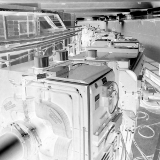Speaker
Mario Gai
(Istituto Nazionale di Astrofisica)
Description
Authors:
M. Gai, A. Vecchiato
Ist. Naz. di Astrofisica - Osservatorio Astrofisico di Torino
High precision astrometry at the microarcsecond level is a promising tool
for Fundamental Physics tests in the Solar system, reaching a sensitivity
adequate to set stringent constraints on the competing theories of
gravitation, including General Relativity, and on effects induced by
quantum mechanics related phenomena.
In the latter case, it may evidence the gravitational properties of anti-matter
by verification of some basic theoretical assumptions, e.g. the hypothesis
that conventional and anti-matter may act in a repulsive way on each other,
retaining the attractive interaction among homologous matter type particles.
Then, Quantum Vacuum might have gravitational effects due to polarisation of
the matter-antimatter virtual particle pairs in an external gravitational field,
since polarisation will act as an additional field.
In turn, this may induce an excess shift of the longitude of the pericenter
in the orbit of a binary system, in particular located at large distance from
the main local gravity source.
Assessments of the expected level on the trans-neptunian binary system
UX25 was estimated by Hajdukovic (2014) to be about $0.23$~arcsec per orbit.
We discuss the verification of such effect by state-of-the-art or near-future
astronomical infrastructures, either on ground or in orbit, evidencing its
feasibility in a reasonable experimental framework.
The observation implications of effect discrimination from disturbances due
to other physical reasons (e.g. object shape and structure) are reviewed.
Primary author
Mario Gai
(Istituto Nazionale di Astrofisica)
Co-author
Dr
Alberto Vecchiato
(Ist. Naz. Astrofisica - Oss. Astr. Torino)




